Name 3 Biotic and 3 Abiotic Factors.
Biotic: Plants, Animals, Bacteria
Abiotic: Sun, Rocks, Temperature
(There are more possible answers.)
What is a food web?
Network of connected food chains
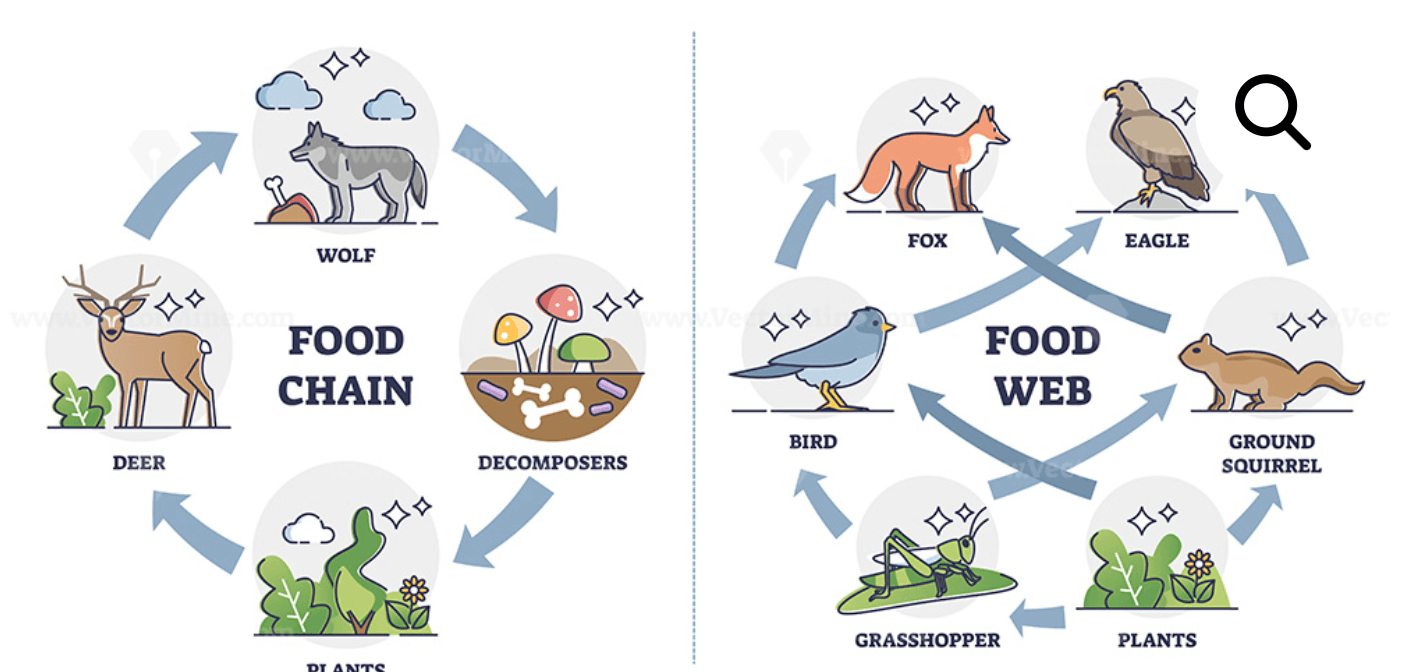
How much energy do organisms get from the organism below them on the food chain?
10%
Carrying Capacity is the __________ number of a population that an ecosystem can support.
Maximum
What is an invasive species?
An invasive species (also called a non-native, or an exotic species) is one that is introduced, either accidentally or purposefully, almost always by humans, into an ecosystem in which it did not evolve. It causes economic or environmental harm.
This is evidence of an organism. Is this evidence from a direct or indirect survey?
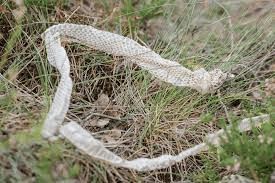
Indirect Survey
What is one thing you would change to improve this food web?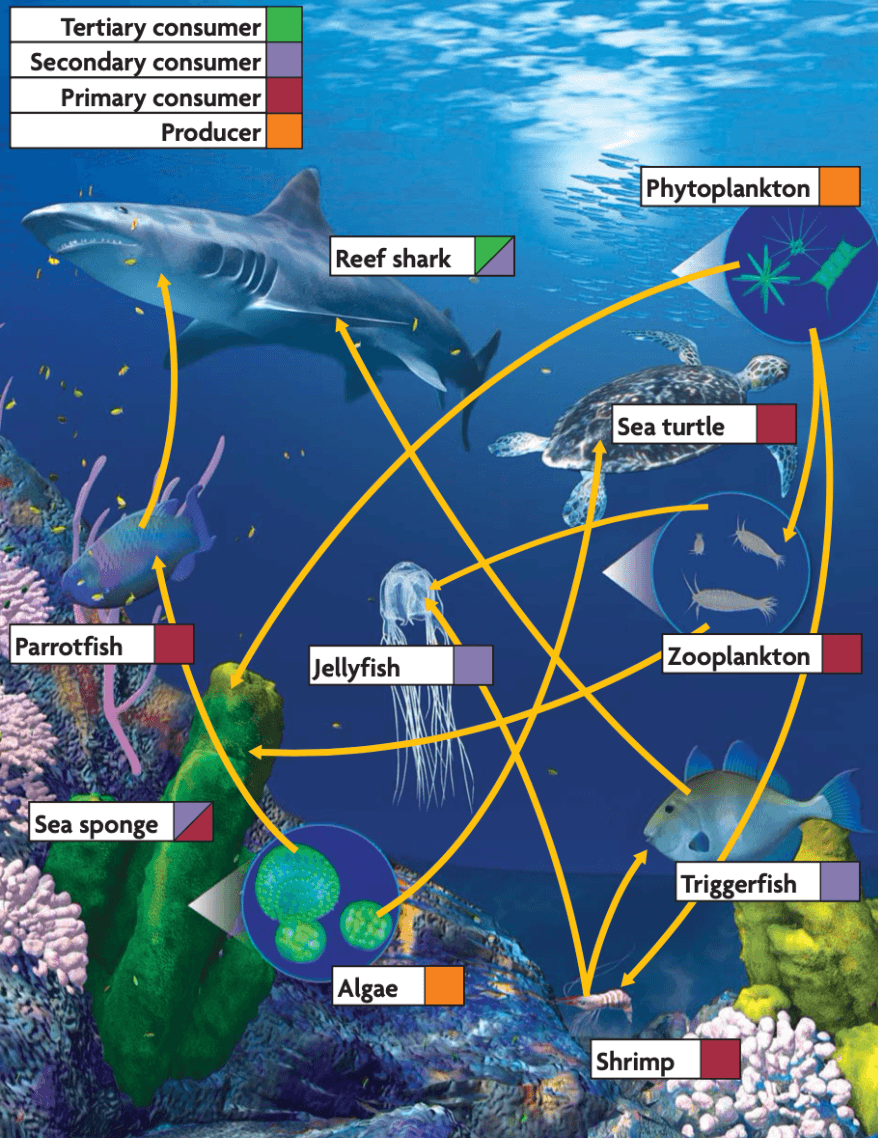
Put the producers at the bottom
Add another producer as a food source for sea turtle and parrotfish.
What happens to the other 90% of energy that is not passed on?
Lost at heat, excreted as waste, or just not used
Lack of abundance of food, non-sustainable foods, and competition for resources are examples of ________________.
Limiting Factors
What are the three things than can happen when a new species arrives in an ecosystem?
1. die
2. assimilate
3. become invasive
A community is all of the ________ parts of the ecosystem.
Biotic
What is an example of an organism that is both a primary and secondary consumer?
Anything that eats both plants and meat, essentially. (ex: some birds)
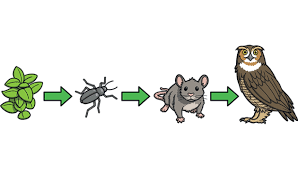
If an ecosystem can support 1500kg of biomass of beetles, how many kg of owl can it support?
15 kg
When there are no limiting factors, the population graph can grow at an ____________ rate. 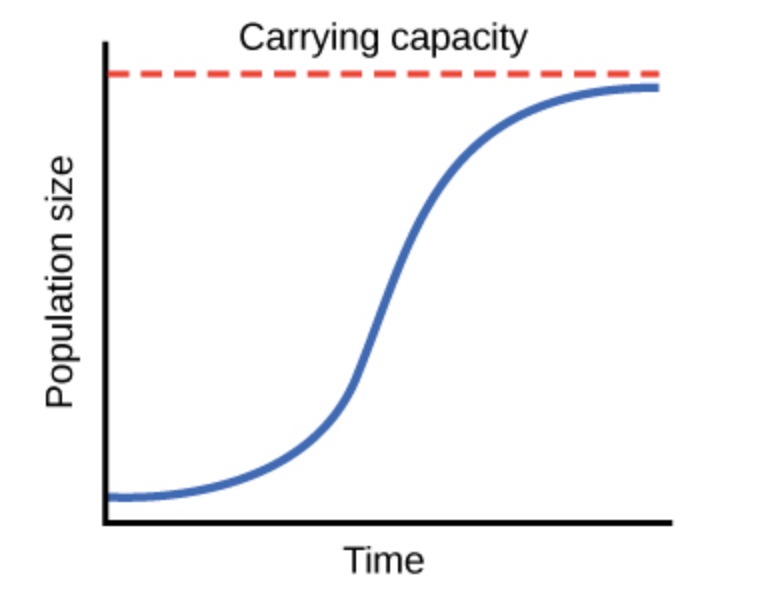
Exponential
Name 3 characteristics that invasive species often have that make them harmful.
Spread aggressively
Reproduce quickly
Grow up relatively quickly
Tolerate a wide range of climatic conditions and habitats
Compete efficiently against other species
Have no natural enemies in their new land
Another word for a producer is _______.
Another word for a consumer is ________.
Producer = autotroph
Consumer = heterotroph
What are two things we usually leave off a food chain/web?
Sun and Decomposers
What is each step on a food pyramid called?
Trophic Level
How does the carrying capacity of secondary consumers compare to the carrying capacity of primary consumers, in terms of the energy pyramid?
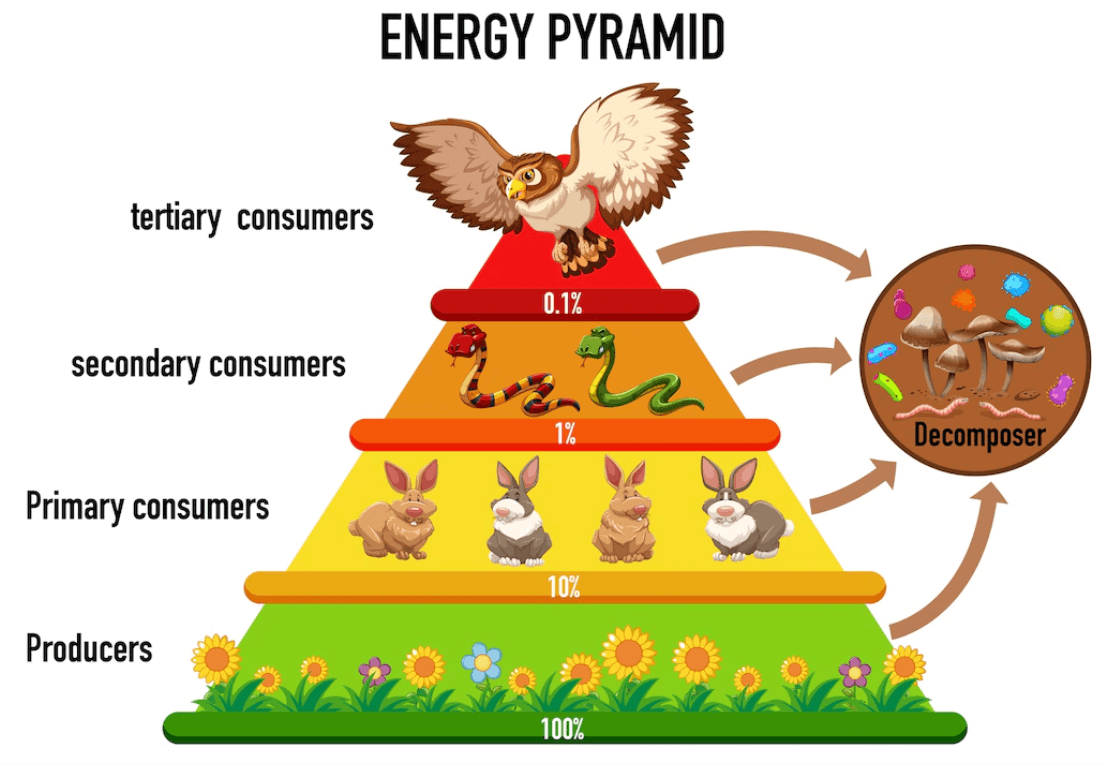
The ecosystem should have a larger carrying capacity for the primary consumer than the secondary consumer, because there is more energy available at the lower trophic levels.
Why is the bluebird population in Michigan decreasing?
What is the difference between primary and secondary succession?
Primary succession is the creation of a new community, started by a pioneer species.
Secondary succession is the regeneration of a community after a damaging disturbance. It is started by remaining species, seeds, and spores.
Name a 4 step food chain including bluebirds.
Example:
Producer: Tree
Primary Consumer: Beetle
Secondary Consumer: Spider
Tertiary Consumer: Bluebird
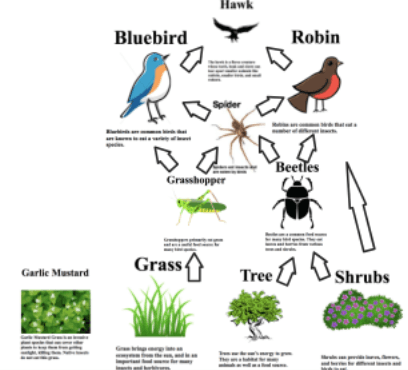
Part 2: How do producers convert this energy into chemical energy for the ecosystem to use?
1: The Sun
2: Photosynthesis
1. What is one way that a carrying capacity for a population could decrease?
2. What is one way that a carrying capacity could increase?
1. decrease in food, decrease in water, increase in competition, decrease in shelter
2. increase in abundance of food/water/shelter, decrease in competition
Name 3 invasive species we have talked about/presented in class.
Asian clams, garlic mustard, zebra mussels, honeysuckle, baby's breath, knotweed, buckthorn, wild parsnip, mute swans, sea lamprey, barberry,...